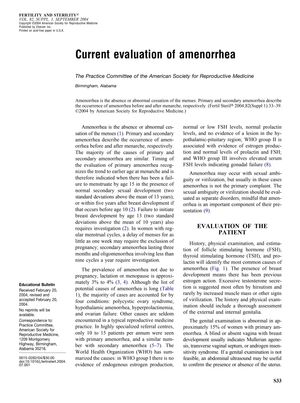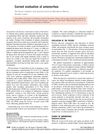Current Evaluation of Amenorrhea
September 2004
in “
Fertility and Sterility
”

TLDR Amenorrhea, or the absence of periods, should be evaluated by age 15 or within five years of early breast development, and is most commonly caused by conditions like polycystic ovary syndrome and hypothalamic amenorrhea.
The 2004 study "Current evaluation of amenorrhea" defined amenorrhea as the absence or abnormal cessation of the menses. Evaluation of primary amenorrhea should occur by age 15 if there's normal secondary sexual development, or within five years after breast development if it occurs before age 10. The prevalence of amenorrhea not due to pregnancy, lactation, or menopause was approximately 3% to 4%. The majority of cases were caused by polycystic ovary syndrome, hypothalamic amenorrhea, hyperprolactinemia, and ovarian failure. The study also provided a detailed evaluation process for patients with amenorrhea, including history, physical examination, and estimation of follicle stimulating hormone (FSH), thyroid stimulating hormone (TSH), and prolactin.

